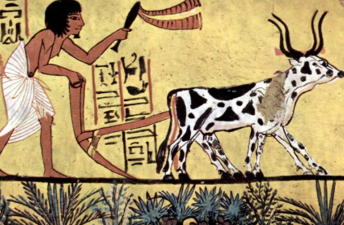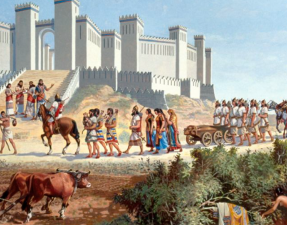How Did Human Civilization Begin?
In anthropology and archaeology, civilization can also refer to the evolution of humans from the inherent savagery of animals to the establishment of fair, rule-based societies through wisdom, as exemplified by Chinese, Indian, Greek, and Egyptian civilizations. It can also refer to cultural groups, such as Buddhist, Taoist, and Confucian civilizations.
The criteria for the emergence of civilization primarily include the development of moral etiquette, the creation of written language, and the establishment of fair national rules and institutions. Cultural change plays a significant role in the emergence of civilization. Changes in agricultural methods, the differentiation of labor, the emergence of a ruling class (i.e., a central government), and the emergence of social classes are all key characteristics of civilization.
Tool Use and Production:
The Material Basis of Civilization

Human civilization began with the conscious use and adaptation of tools. Millions of years ago, ancient humans picked up stones to crack nuts, marking the earliest use of tools. As their cognition advanced, they began to purposefully process stones, hammering flint into sharp scrapers and points for cutting meat and digging for roots. Although crude, the stone tools of the Paleolithic Age marked humanity's departure from animalistic instincts and its entry into a stage of active transformation of nature. The Neolithic Age saw significant advancements in toolmaking, with the emergence of polished stone axes and shovels. Pottery firing was a breakthrough—clay. After being shaped and fired, it became a food storage container, solving the problem of food preservation and providing the material foundation for the continuation of civilization. The evolution of tools not only enhanced survival capabilities but also prompted humanity to explore "how to do things better," which is the original driving force behind the advancement of civilization.
Language and Symbols:
The Communication Bond of Civilization
As human groups expanded, simple body movements and simple shouts were no longer sufficient for collaboration, and language emerged. Language enabled the transfer of experience—elders could tell younger generations which plants were edible and which beasts to avoid. Language also enabled planning—dividing the work of hunting and allocating areas for gathering relied on clear communication. As the need for communication grew, symbols gradually emerged: rock paintings depicting hunting scenes, incisions on pottery marking quantities—these symbols were the precursors of writing. From knotted cords to oracle bone inscriptions, symbols evolved from concrete to abstract, becoming not only capable of recording events but also conveying ideas and knowledge. The emergence of language and symbols allowed humans to transcend the limitations of individual memory and achieve the intergenerational transmission of knowledge, a core bond that sustains civilization.
Settlement and Agriculture:
The Stable Carriers of Civilization
During the long era of hunter-gatherers, humans migrated to follow food resources, making it difficult to form stable groups. The advent of agriculture over 10,000 years ago changed this dynamic. Discovering that sowing seeds yielded crops and domesticating wild animals provided a stable source of food, humans began to settle down. Settlement gave rise to villages—houses were built along rivers, forming an orderly residential layout. Granaries and cellars emerged to store food, and simple canal systems were constructed to irrigate farmland. Settlement freed humans to devote more time to non-survival activities: pottery became more refined, toolmaking became more specialized, and even specialized toolmakers emerged. The stable food supply provided by agriculture allowed for the expansion of population size, laying the foundation for the complexity of civilization.






